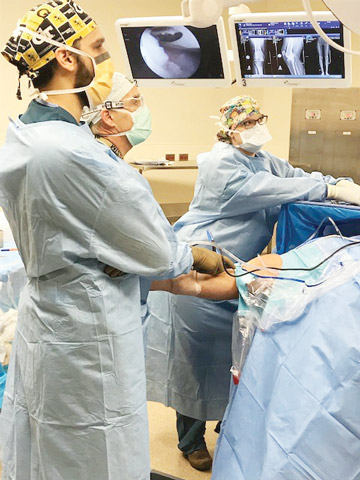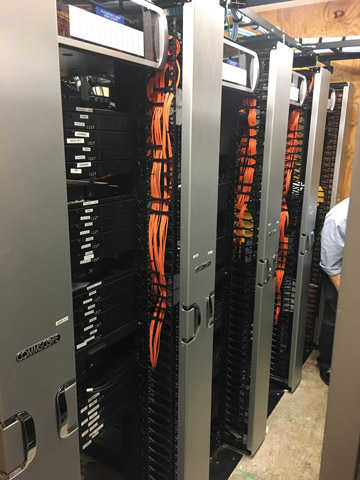April 25, 2024
Growing demand for anesthesia services at ASCs is being met with a dwindling supply of anesthesia providers....
This website uses cookies. to enhance your browsing experience, serve personalized ads or content, and analyze our traffic. By clicking “Accept & Close”, you consent to our use of cookies. Read our Privacy Policy to learn more.
By: Suraj Soudagar
Published: 12/10/2020
Your surgeons can spend hours poring over data about what they need to do to ensure a superior surgical outcome, but when they actually go into the OR to operate, the crystal-clear resolution of the right surgical video system that allows them to better visualize tissue and the depth of color in the blood becomes a critical factor in their decision-making.
In order to get the most out of a video system for your facility's clinical needs, you need to know what factors to consider during an upgrade. Let's take a look at all the critical components of a surgical video system to help you decide.
For most minimally invasive procedures, the optimal visual path requires superior resolution along the entire imaging chain, from the camera at the tip of the scope to the monitor that shows the captured images. When trialing a new video system, make sure each component is capable of transmitting or displaying 4K ultra-high-definition video, so the images captured by the camera in the surgical field are what surgeons actually see on monitors.
Dynamic response is a useful feature found on some of the latest imaging platforms. This feature automatically brightens or dims light while the surgeon is navigating within the surgical cavity. Dynamic response is similar to the technology that automatically lowers a car's high beam headlights when another car comes into view. Surgeons benefit from dynamic response on their scopes' cameras because too much light reflection can create a blinding effect. On the flip side, dynamic response automatically brightens the surgeon's view if there's too much darkness within the surgical cavity to properly navigate or identity critical structures.
Another key consideration when upgrading your video system is what type of editing, retrieval and storage capabilities are needed. Surgeons working in academic teaching institutions have vastly different requirements than those who operate in freestanding ASCs. But even surgeons in non-academic settings might want to use captured images for conference presentations or to create educational videos for other providers.
Determine how important video capture and storage are to your surgeons. One terabyte of storage capacity is generally a good starting point with 4K systems, although be prepared to expand that capacity in the future. Consider picture archiving communication systems (PACS) as an example of where we're likely headed with 4K image management. Remember when PACS was first introduced? It was pitched as a one-time investment, but facilities are continually investing in upgrades to ensure high-quality images can be stored. Capturing and storing 4K videos will require a similar level of investment, and is a whole new dimension of patient data management you need to consider.
When you upgrade your video system, you're not making a one-time decision. You also need to consider your facility's future needs and create a roadmap for down-the-road decisions. Nobody knows exactly what the future of surgical imaging will look like, but from an infrastructure standpoint, you should get the right pieces in place today to plan for a high-tech tomorrow. That way, your next upgrade becomes a seamless endeavor — you won't have to rip out walls and change conduits.

When you make the major decision to partner with a company and upgrade your surgical video system, you want to work with a vendor that will show you a roadmap for growth and innovation that offers proven ways to grow your service line over the next five, 10 or even 15 years. To ensure you get this from a video vendor, ask these questions:

The amount of data you need to transfer data from the latest surgical video systems to an internal network is guaranteed to bog down bandwidth and affect other systems. Standard copper wires are an inadequate conductor for large 4K images, which degrade after they pass through 300 feet of the wire. That's why I recommend upgrading your video network from copper wire to fiberoptic cables. Yes, this will require an upfront cost, but it's an investment that's well worth making because upgrades you make five or 10 years from now will truly be a plug-and-play process.With fiberoptic cables, data degradation isn't an issue.
Many surgeons are closely watching the progress of 3D video. The benefits of these platforms include improved visualization, especially of hard-to-see areas, and better diagnostic and decision-making capabilities for surgeons. As bandwidth and speed issues decrease with this technology, you can expect its adoption to increase among outpatient facilities. And, just like upgrading to a 4K platform, surgical facility leaders will need to do a deep dive into exactly what their facility needs to get the most out of these systems. OSM
Growing demand for anesthesia services at ASCs is being met with a dwindling supply of anesthesia providers....
Improvements in both workflow and staff attitudes are part of a leader’s responsibilities, but your interventions in these areas don’t need to be major to make...
The ASC market continues its rapid growth. In 2023, roughly 116 new ASCs opened in the U.S., many of which were orthopedic-specific in nature....